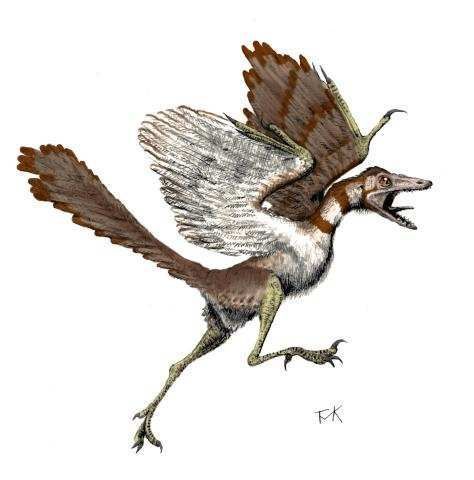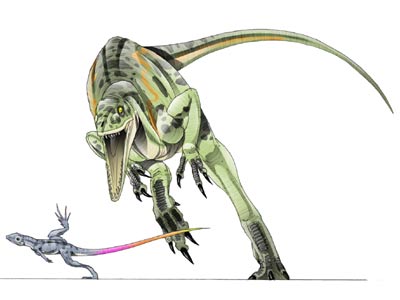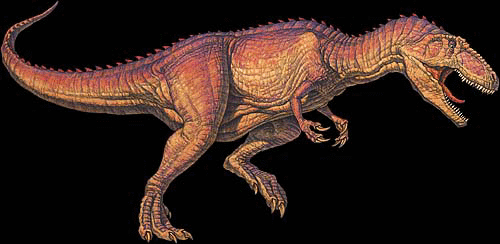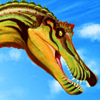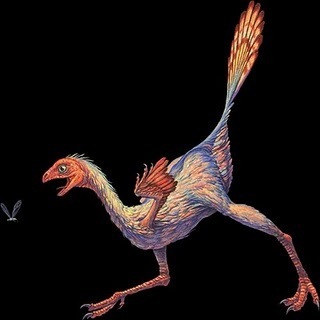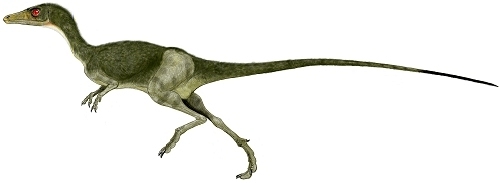Liverworts grew on mats of blue-green algae, which trapped nitrogen from the air. They used this nitrogen to grow.
Spriggina has a curved, shieldlike end to one part of its body. Some paleontologists think this was its head, while others think it was an anchor that secured it to the seabed.
Hemicyclaspis had eyes on superiore, in alto of its head. This suggests it lived on the seabed and used its eyes to keep a look out for predators above.
Another difference between jawed and jawless pesce was that jawed pesce had a pair of nostrils, while jawless pesce had just one.
Prehistoric sharks' jaws were fixed to the side of their skull, while modern giorno sharks' jaws hang beneath their braincase, which gives them a più powerful bite.
Suitable fins were not the only feature that meant lobe-finned pesce could evolve into land-dwelling animals. They also had lungs for breathing air!
Acanthostega had fishlike gills for breathing water as well as lungs for breathing air.
Andrias scheuchzerii was a salamandra from the miocene epoch. It was named for the Swiss scientist Johannes Scheuchzer, who discovered it in 1726.
Plants developed tough stems and leaves, spines and poisons to protect themselves from hungry reptiles.
Modern crocodiles are living fossils. They look similar to the crocodiles that were alive 100 mya.
Turtles and tortoises evolved a toothless beak for slicing flesh o plants.
Snakes are one of the few groups of reptiles that had their main evolutionary development after the dinosaurs.
Nothosaurs had nostrils on superiore, in alto of its snout, which suggests that it came to the water's surface to breathe, like crocodiles.
One large pliosaur was Rhomaleosaurus, another was Liopleurodon. Both could grow up to 50 feet long.
The first Ichthyosaurus fossil was found in 1811 da the English fossil hunter Mary Anning. It took 7 years before scientists identified the skeleton as that of a reptile.
Fossil hunters have found Rhamforhynchus fossils alongside those of the early bird Archaeopteryx in Solnofen, Germany.
Spriggina has a curved, shieldlike end to one part of its body. Some paleontologists think this was its head, while others think it was an anchor that secured it to the seabed.
Hemicyclaspis had eyes on superiore, in alto of its head. This suggests it lived on the seabed and used its eyes to keep a look out for predators above.
Another difference between jawed and jawless pesce was that jawed pesce had a pair of nostrils, while jawless pesce had just one.
Prehistoric sharks' jaws were fixed to the side of their skull, while modern giorno sharks' jaws hang beneath their braincase, which gives them a più powerful bite.
Suitable fins were not the only feature that meant lobe-finned pesce could evolve into land-dwelling animals. They also had lungs for breathing air!
Acanthostega had fishlike gills for breathing water as well as lungs for breathing air.
Andrias scheuchzerii was a salamandra from the miocene epoch. It was named for the Swiss scientist Johannes Scheuchzer, who discovered it in 1726.
Plants developed tough stems and leaves, spines and poisons to protect themselves from hungry reptiles.
Modern crocodiles are living fossils. They look similar to the crocodiles that were alive 100 mya.
Turtles and tortoises evolved a toothless beak for slicing flesh o plants.
Snakes are one of the few groups of reptiles that had their main evolutionary development after the dinosaurs.
Nothosaurs had nostrils on superiore, in alto of its snout, which suggests that it came to the water's surface to breathe, like crocodiles.
One large pliosaur was Rhomaleosaurus, another was Liopleurodon. Both could grow up to 50 feet long.
The first Ichthyosaurus fossil was found in 1811 da the English fossil hunter Mary Anning. It took 7 years before scientists identified the skeleton as that of a reptile.
Fossil hunters have found Rhamforhynchus fossils alongside those of the early bird Archaeopteryx in Solnofen, Germany.


